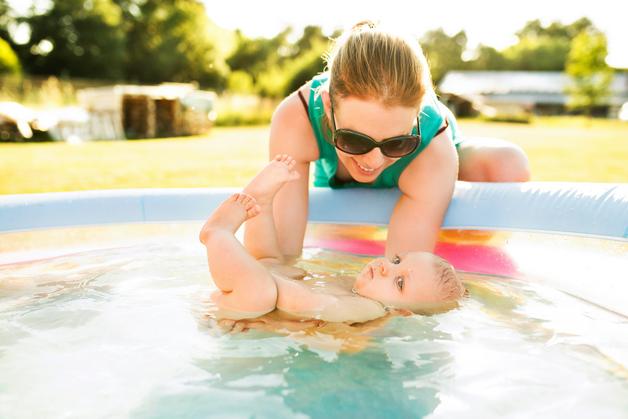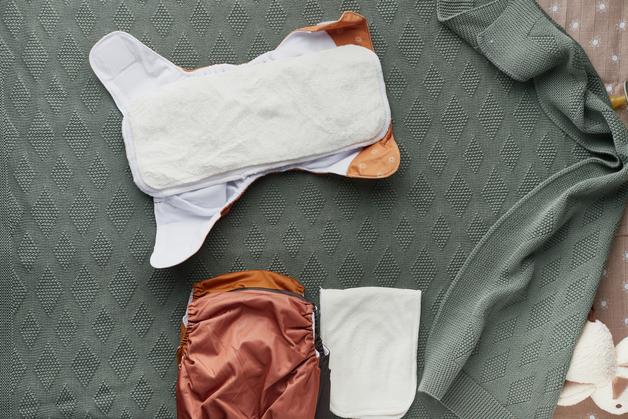As a parent, your mind is a tapestry of questions when your child’s aquatic adventures draw near. Swim lessons, birthday parties, the first family trip to the local public pool—each invitation also brings a wave of practical concerns: How do you actually keep pool water clean with babies? What are public health expectations for small children? Is there a risk of infection? And, most importantly, how do you balance comfort, hygiene, and your child’s sense of freedom? The answer that surfaces again and again is the swim diaper—this unsung hero of baby swimming. From fortifying community health to sparing anxious clean-ups poolside, the right swim diaper can make water play joyful and stress-free. Here, plunge into a world of practical advice, medical context, and empowering choices—so you’ll be ready for every splash, ripple, and giggle.
Understanding the Swim Diaper: What Sets It Apart
Swim Diaper vs. Regular Diaper: What’s Really Different?
If you take a regular diaper for a test drive in the pool, the result? Sudden waterlogging, ballooning to the size of a rugby ball, and a soggy, immobilized child. Unlike their day-to-day counterparts, a swim diaper features a unique, tightly woven, non-absorbent core. Its job isn’t to soak up urine—quite the contrary: the absence of superabsorbent polymers means it remains compact, light, and gentle on sensitive skin, even when fully submerged. Specialized leg cuffs and a stretchy waistband create a barrier, reducing the risk of fecal accidents escaping into the water, which is essential for safeguarding public health in shared waters such as swimming pools and splash pads.
Why Health Experts Endorse the Swim Diaper
Public health bodies and the Center for Disease Control (CDC) consistently emphasize: children who are not toilet-trained pose a risk of fecal contamination in public pools. The swim diaper, by containing solid waste, drastically helps curb the spread of enteric pathogens like E. coli, norovirus, and Cryptosporidium. While not infallible—no product offers absolute security—it represents an evidence-based intervention, and many pool operators enforce strict swim diaper policy for this reason.
Types of Swim Diapers: Finding the Right Match
Disposable Swim Diaper: Convenience and Limitations
Single-use swim diapers, widely available in supermarkets and pharmacies, boast a waterproof exterior and a lightly absorbent lining. They shine in scenarios calling for minimal fuss—family vacations or one-off pool visits. Tear-away sides, intuitive sizing, and high accessibility make them appealing. Yet, these diapers end up in landfill—an environmental concern for many—and can add up in cost if swimming becomes a ritual.
Reusable Swim Diaper: Sustainable and Skin-Friendly
For regular swimmers, the reusable swim diaper is a revelation. Built from antimicrobial polyester or neoprene, these options are engineered for repeat use and can be laundered alongside baby clothes. Adjustable snaps and elastic reinforcement allow for a tailored fit as your child grows (and let’s face it, they seem to grow overnight). Research into textile safety has shown that certified, hypoallergenic fabrics in today’s reusable swim diapers can offer both superior skin protection and wallet-friendly savings over time. The caveat? Anticipate laundry—always have a freshly cleaned backup on hand.
Hybrid and Swim Briefs: Bridging Function and Aesthetics
The hybrid swim diaper, featuring a washable cover with a disposable or reusable insert, combines flexibility with performance. Swim briefs with integrated absorbent lining look like regular swimwear but harbor discreet, leak-proof technology—often a hit among older toddlers or style-conscious parents.
Sizing and Materials: Getting It Right
- Measure both waist and thighs: A snug but not constricting fit is vital for leak prevention. Indentations or red marks indicate a need for a size reassessment.
- Check for fabric certifications: Look for “Oeko-Tex Standard” or “hypoallergenic” labels, especially for babies with atopic dermatitis (eczema-prone skin).
- Allow for full range of motion: If your child cannot comfortably squat, sit, or kick, the diaper is probably too tight.
Selecting According to Habits
- Occasional swimmers may prefer disposables for ease and cleanliness.
- Weekly lessons? Invest in two or three high-quality resuables to ensure one is always clean and dry.
How Does a Swim Diaper Function? Evidence-Based Insights
Medical Rationale Behind the Design
What exactly makes a swim diaper tick? The leg and waist elastics serve as semi-permeable barriers, containing solid matter but allowing water to pass—since total impermeability would paradoxically lead to ballooning and possible skin breakdown from trapped moisture. The science is clear: swim diapers are not engineered to capture urine (which dissipates harmlessly in pool filtration systems) but are meticulously structured to contain fecal particles, thus reducing the microbial burden on pool water.
Best Practices for Wearing, Changing, and Layering
- Put the swim diaper on right before swimming: Extended non-swimming wear can cause skin irritation due to warmth and friction.
- Change every 30–60 minutes: This aligns with medical recommendations on minimizing diaper dermatitis risk, especially in high-humidity environments.
- No double-diapering: Medical studies confirm: layering a regular diaper beneath a swim diaper disrupts the seal and can increase leaks.
- Never flush diaper contents or the diaper itself: If a bowel movement occurs, empty fecal matter in the toilet before disposing of or washing the diaper.
Hygiene, Comfort, and Pool Etiquette
Water Hygiene and Community Health
Swim diapers are a linchpin of public pool protocols aimed at limiting the transmission of waterborne diseases. They aren’t a solo defense; a well-maintained pool with effective filtration and chlorination remains essential. Still, prompt diaper changes and the use of swim diapers significantly lower the risk of recreational water illness outbreaks.
Preventing Diaper Rash and Ensuring Comfort
Pediatric dermatologists underscore the importance of frequent diaper changes and choosing a gentle, dermatologically-tested swim diaper. When in doubt, prioritize diapers with seamless inner layers and avoid harsh cleansing wipes after swimming. Allowing the diaper area to air-dry after use further reduces the chances of a rash flare—especially vital for children with sensitive skin.
Etiquette for Parents: Respectful Poolside Behavior
- Use designated changing tables—never the pool edge.
- Dispose of single-use swim diapers hygienically, sealing waste in a bag.
- Inform staff after any “missed” accidents, to enable appropriate cleaning.
Environmental Impact: Making Informed Choices
Reusable vs. Disposable
Environmental science underscores the advantages of reusable swim diapers: reduced waste, lower carbon footprint, and long-term savings. For frequent pool-goers or eco-conscious families, the preference is clear. For those using disposables, proper waste management—disposing of solids and never flushing diapers—helps minimize ecological impact.
Practical Guidance for Daily Use
- Have at least two swim diapers per water outing (one in use, a spare in case of accidents or extended play).
- Pack essentials: wipes, hand sanitizer, a sealable wet bag for soiled items, plus a lightweight, wide-brimmed hat for sun protection.
- For older children or those nearing potty-training, discuss the transition openly—maintain dignity and encourage autonomy.
Maintenance and Lifespan of Reusable Swim Diapers
- Rinse immediately after use to prevent stains and eliminate bacteria.
- Machine or hand-wash at 40°C with mild detergent. Avoid fabric softeners—they degrade the water-resistant coating over time.
- Air-dry, never tumble dry. Excess heat hastens wear on elastics and waterproof laminates.
- Inspect regularly: If the elastic loses tension or odors persist, retire the diaper. Dermatological research stresses the link between poorly maintained diapers and increased risk of dermatitis.
Myths, Misconceptions, and Evidence
- Swim diapers do not absorb all accidents; rather, they are engineered to reduce fecal passage.
- “Double-diapering” is unnecessary and can worsen leakage.
- Poolside changes protect both your child and other swimmers—diligence benefits all.
- Accidental leaks, while rare, are best managed with transparency—alert staff, encourage open communication, and be prepared with a change of clothes.
Buying Tips and Top Brands
Leading Brands and Cost Facts
Trusted brands such as Huggies Little Swimmers, Pampers Splashers, and Splash About Happy Nappy are widely recommended for their tailored fit, easy changes, and rigorous safety testing. Evaluate by:
- Per-unit cost vs. frequency of use
- Design features: tear-away sides, adjustable snaps, certified skin-safe fabrics
Where to Find, Sizing, and Seasonal Planning
Major retailers, baby boutiques, and online platforms provide year-round access, with most brands offering detailed weight-based sizing guides. Expect demand to peak in summer months—shopping early secures your preferred size and style.
Key Takeaways
- The swim diaper is indispensable for healthy, happy water play—protecting pool hygiene, limiting illness, and keeping your child comfortable.
- Whether single-use or reusable, fit and frequent changes are non-negotiable for both safety and skin health.
- Evidence underscores the swim diaper’s role in infection prevention, while gentle materials and careful maintenance guard against irritation.
- When dilemmas arise—rash, persistent leaks, or allergies—consult your pediatrician or a pediatric dermatology nurse for peace of mind.
- For further personalized guidance, medical questionnaires, and supportive tips tailored to your family, consider downloading the Heloa app—your companion for everyday parental care.
Dive in with knowledge, preparation, and confidence. Each splash and smile tells you that your little one’s safety and comfort are in expert hands—yours.
Questions Parents Ask
Can swim diapers be worn outside of the pool or for everyday use?
While swim diapers are wonderful for water play, they are not intended for everyday wear. Their structure does not absorb urine as standard diapers do, which could lead to wet clothing or discomfort if used outside swimming settings. For daily activities, regular diapers remain the most suitable and reassuring choice for your little one’s comfort and hygiene.
Are swim diapers required at all public pools, and how can parents check the rules?
Most public pools, as well as many aquatic centers and holiday resorts, encourage or require the use of swim diapers for children who are not yet toilet trained. Since local regulations may differ, you can easily check the pool’s website or contact staff before your visit for specific guidelines. This simple step helps everyone enjoy a safe, relaxed swim.
Where can parents buy swim diapers, and do all stores carry both reusable and disposable options?
Swim diapers—both reusable and disposable varieties—are offered at most major supermarkets, baby specialty stores, sporting goods shops, and online retailers. However, the availability of each type can differ by location or season. If you have a preference, especially for reusable models or specific brands, looking online or calling ahead to check stock may simplify your shopping experience and help you find the best fit for your child.

Further reading:









